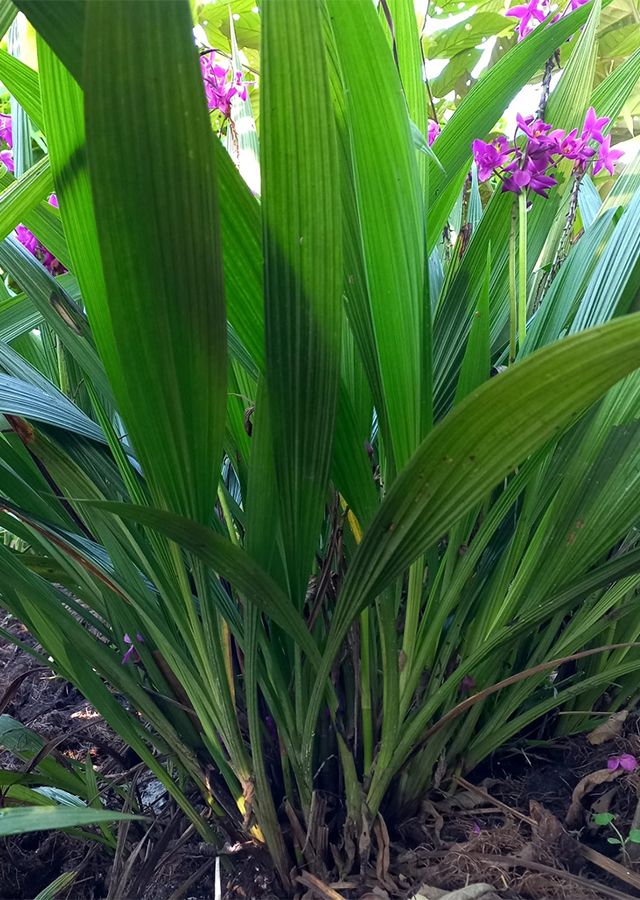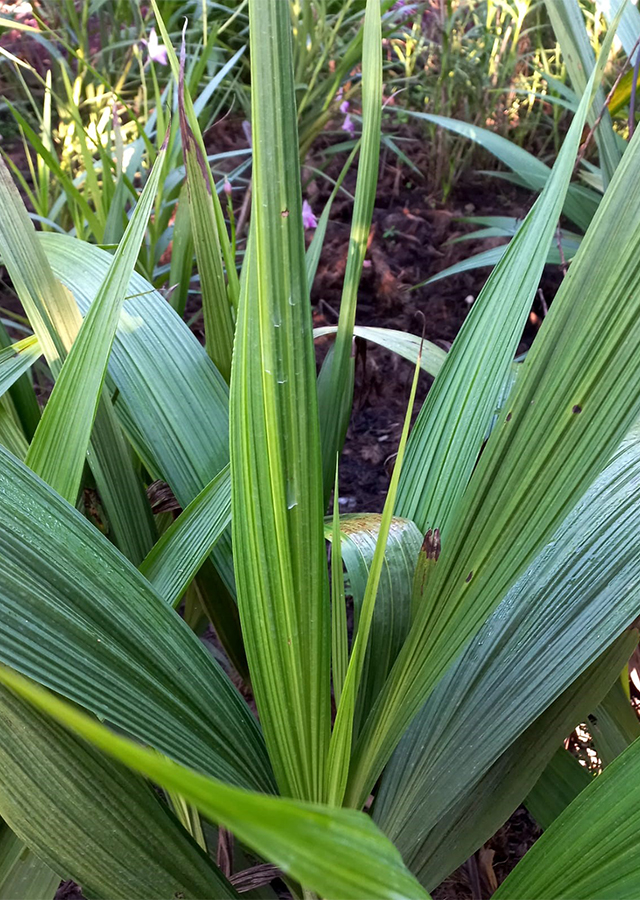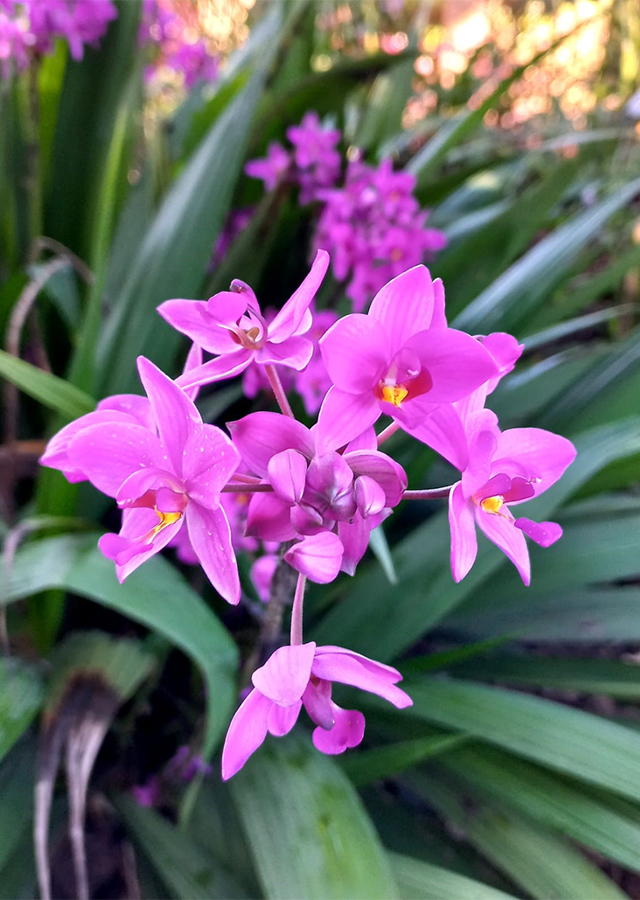Traditional Herbs from Spathoglottis plicata
rheumatism
- Prepare enough leaves, clean them of dirt by washing them in running water.
- Grind them until smooth.
- Apply them to sore joints.
ear_ache
- Prepare orchid tubers large purple soil and wash it clean.
- Pound the tubers until they are pulverized.
- Squeeze them and drop the juice on the sick ear.
What is Spathoglottis plicata Looks like??



Parts of Spathoglottis plicata that could be used
- Leaf
- Seed
- Root
- Pseudobulb
Spathoglottis plicata Distribution
Spathoglottis plicata originates from tropical and subtropical Asia, then spread widely throughout Southeast Asia (Malaysia, Indonesia, Papua New Guinea, Thailand, the Philippines), China, Australia and the islands of the Southwest Pacific Ocean. This orchid plant is widely cultivated as an ornamental plant which is often found decorating home gardens as well as cut flowers. Apart from that, this orchid plant has also been used in various countries as a traditional medicine, especially to treat rheumatism and wounds.Agroecology of Spathoglottis plicata
Spathoglottis plicata is often found growing in low and medium altitudes from sea level to an altitude of 800 m above sea level. The growing environment is an open place with full sun but needs a little shade in the afternoon, warm temperatures but does not tolerate temperatures lower than 10 °C, rainfall ranges from 800 - 3,500 mm/year. Likes soil conditions with a pH ranging from 6 - 7.5 and requires a growing medium that has good drainage, because this orchid cannot tolerate standing water.
Morphology of Spathoglottis plicata
- Fabric roots, whitish brown.
- Stem erect, round, soft, green.
- Single leaf, green, elongated like a ribbon, the surface of the leaf is folded lengthwise parallel to the vein, bone leaves protrude below the surface of the leaf, the edge of the leaf is flat, the tip of the leaf is tapered, the base of the leaf becomes narrower downwards.
- Compound flowers, in the form of clusters (each cluster is composed of 5-30 flowers and opens little by little), dark purple to pink pale, has 1 dorsal sepal, 2 petals, 2 lateral sepals, flower petals ovate to oval, hairy, long stem, odorless.
- Fruit is a cylindrical capsule, 6-ribbed, light green.
- Seeds round, small, blackish white.
Cultivation of Spathoglottis plicata
- Generative propagation, namely through seeds, but it takes longer.
- Vegetative propagation (saplings or pseudobulbs). Avoid planting the pseudobulb completely submerged in the ground, but half of the pseudobulb is above the ground.
- Media Suitable planting is the bottom layer in the form of broken bricks/tiles/charcoal and the top layer is leaf humus.
Spathoglottis plicata, more details :
Chemical Content of Spathoglottis plicataAlkaloids, flavonoids, terpenoids, polyphenols, saponins.
Benefits of Spathoglottis plicata
Treats ear inflammation, arthritis, rheumatism, boils, relieves pain and improves blood circulation, heals wounds and burns, vertigo, anticancer.
Simplisia of Spathoglottis plicata
Another Facts for Spathoglottis plicata :
Synonym of Spathoglottis plicataCalanthe poilanei Gagnep., Spathoglottis augustorum Rchb.f, Paxtonia rosea Lindl.
Habitus of Spathoglottis plicata
Orchid. Orchid, annual, up to 100 cm high
Habitat of Spathoglottis plicata
- Forest", "Coastal", "Roadside", "Shrub Area", "Grassland", "Land
No comments:
Post a Comment